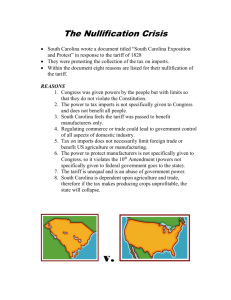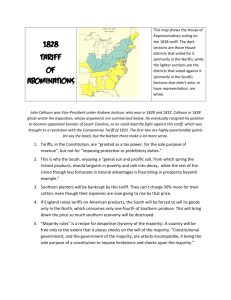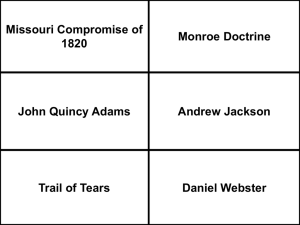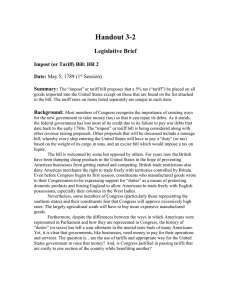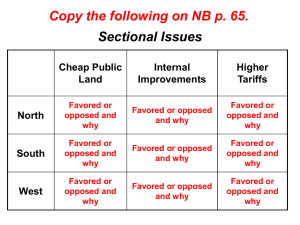Tariffs, Nullification Crisis, and States Rights Theory/Debate
advertisement
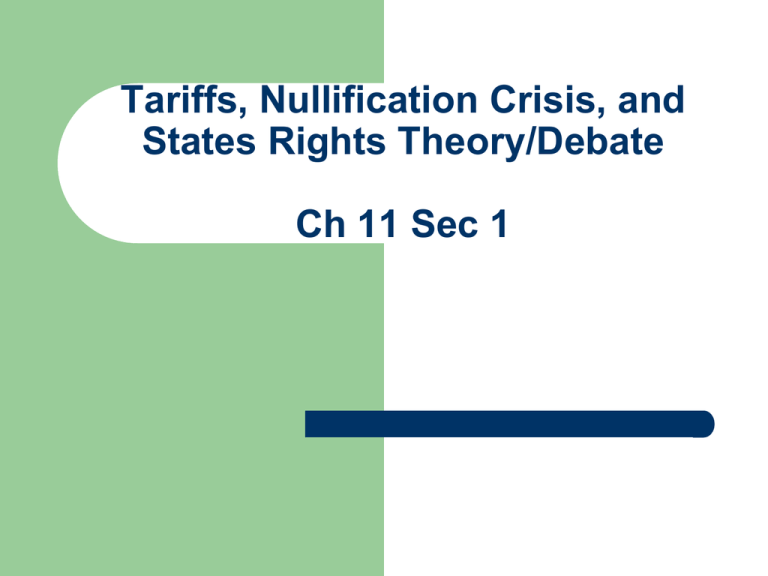
Tariffs, Nullification Crisis, and States Rights Theory/Debate Ch 11 Sec 1 Essay Prompt: Analyze how tariffs led to the nullification crisis and the development of the states’ rights theory/debate. How was this disagreement settled? (Hint: don’t forget force bill) 1828 Congress passed very high tariff Tariff = tax on imported goods North = manufacturing economy (factories) = supported tariff because it made US manufactured goods cheaper than European goods. = Result, tariffs encouraged Americans to buy American goods. South = agricultural economy = opposed tariff because the S. traded cotton with Europe in exchange for cheaper European manufactured goods. = tariffs made European goods more expensive. Tariff of Abomination 1828 Congress passed a very high tariff on manufactured goods from Europe Southerners hated that tariff and called it the “Tariff of Abomination” John C. Calhoun Southerner who argued that a state had the right to nullify (cancel) a federal law that is considered unconstitutional. This way of thinking is called “States’ Rights Theory” (Fed govt/Northerners disagree. Therefore it is often referred to as states’ rights debate.) Some southerners were so mad about the tariffs that they called for southern states to secede (break away) from the U.S. and form their own government. S. Carolina (Calhoun’s home state) passed the Nullification Act. Nullification Act = stated that S. Carolina would not pay illegal tariff. Henry Clay (Speaker of the House) passed the Compromise Bill. Compromise Bill = lowered tariff (tax) President Andrew Jackson supported compromise and also convinced Congress to pass force bill. Force bill = allowed Pres to use military to enforce acts of Congress. S. Carolina accepted compromise Result of nullification crisis = federal govt would NOT allow a state to secede from the U.S. without a fight.


